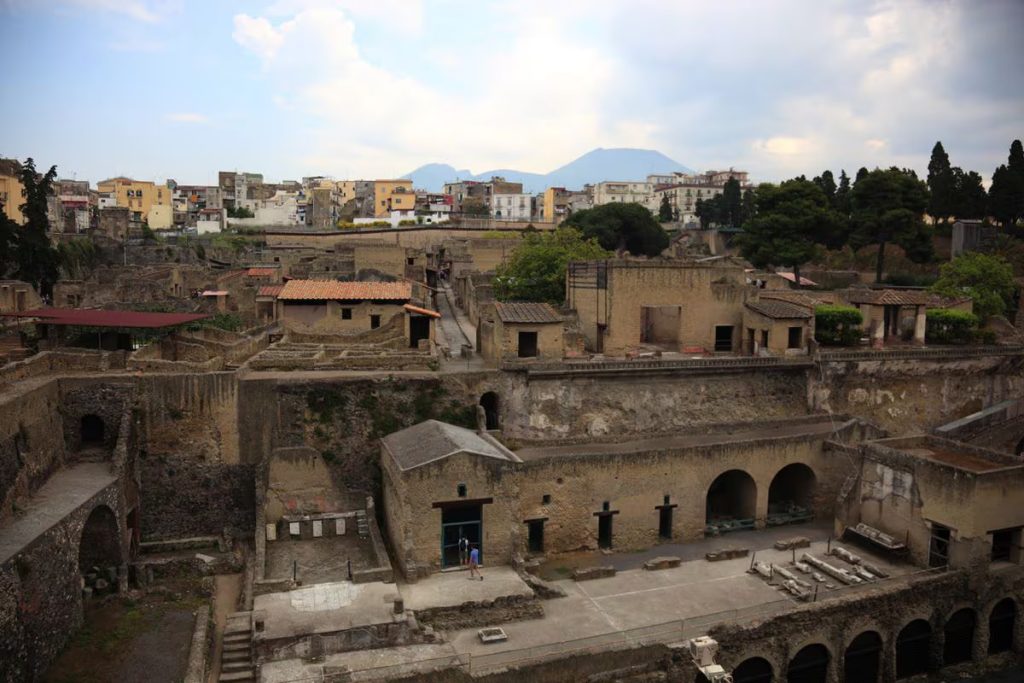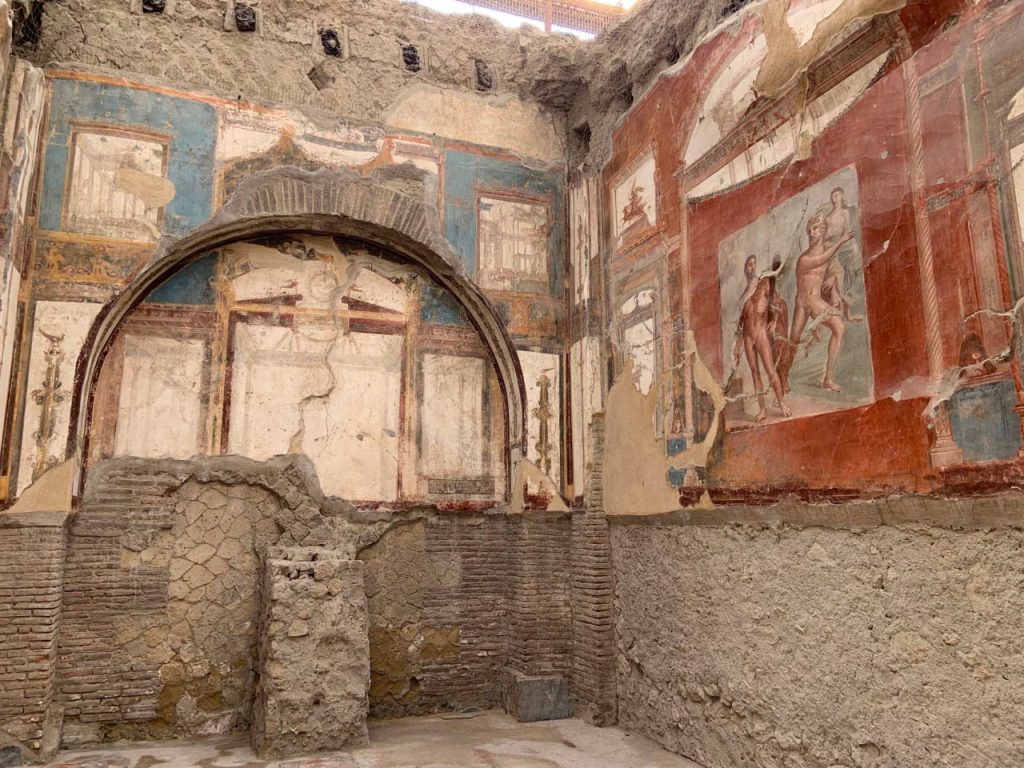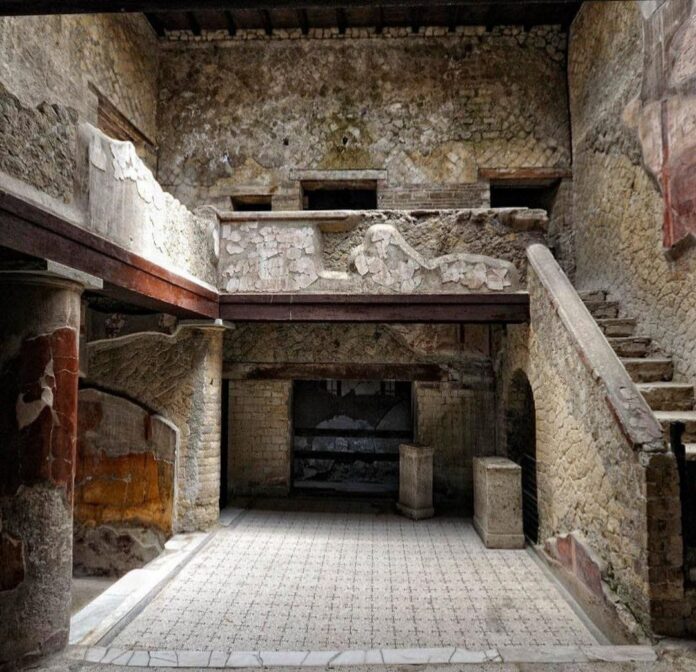A room from the excavated ruins of Herculaneum, Italy, a Roman city destroyed by the eruption of Mount Vesuvius in AD 79, was discovered in 1709. This city was once a vacation spot for wealthy Roman families, with an estimated population of 4,000 at its peak. The eruption of Mount Vesuvius buried the city in ash and pumice, preserving it for centuries.
In 1750, a Roman house belonging to Lucius Calpurnius Piso Caesoninus (Julius Caesar’s father-in-law) was discovered, leading to the modern science of archaeology.

One summer afternoon, young archaeologist Daniel Garcia Varo stood silently amidst the ruins of Herculaneum, an ancient city destroyed by the eruption of Mount Vesuvius in AD 79. Herculaneum, though less famous than Pompeii, remains an archaeological treasure trove filled with mysteries and surprises.
For centuries, archaeologists were puzzled by the absence of human remains in the ruins of Herculaneum. Unlike Pompeii, where human remains were found from the beginning, Herculaneum offered no such clues. It wasn’t until the 1980s that researchers discovered about 300 people who had taken refuge in warehouses near the sea. They were burned alive by a surge of gas at 550 degrees Celsius expelled by the volcano. Their bodies vaporized, leaving only their jewelry and metal objects intact.

Daniel spent many years researching and wrote the book “Herculaneum: The City Under the Shadow of Vesuvius,” the first book about this city in Spanish. He shared, “Herculaneum tells us everything about the daily life of the Romans, from commerce to art, culture, and religion.”
Unlike Pompeii, which was covered by volcanic ash, Herculaneum was buried under mud and scorching gas. This made excavation much more difficult but also preserved many valuable materials like wood, rare in the ancient world. Francesco Sirano, the site director, described Herculaneum as “an open-air archaeological laboratory” with many surprises waiting to be discovered.

Herculaneum is not just fascinating for what has been found but also for what remains hidden. Andrew Wallace-Hadrill, a leading expert on the city’s history, analyzed the remains in an old septic tank to understand more about the diet and diseases of its inhabitants. The Herculaneum Conservation Project, a public-private partnership, has been promoting the use of advanced technology to further explore the site.
On a late May afternoon, Daniel walked on the black volcanic stones and Roman paving slabs, admiring the remnants of wood in shops and houses. He felt a strange connection to the people who lived there 2000 years ago. The bones, the wood, even the tartar on teeth have all been analyzed, providing deep insights into the ancient Roman world.

However, much of Herculaneum’s secrets remain undiscovered. Daniel knew that two-thirds of the city was still unexplored. One of the first buildings excavated was the Villa of the Papyri, where an entire library was found and is still being researched.
At the National Archaeological Museum of Naples, new rooms dedicated to Herculaneum display thousands of artifacts, showcasing the immense beauty of what has been found and suggesting what might still be hidden beneath the rock. Daniel believes that many religious and political buildings await discovery under the petrified pyroclastic flow.
Finally, Daniel left Herculaneum with a heart full of hope and determination. He knew that the city still had many stories to tell, and he would continue to explore and document the secrets of Herculaneum so they would not be forgotten in the sands of time.
Video:




